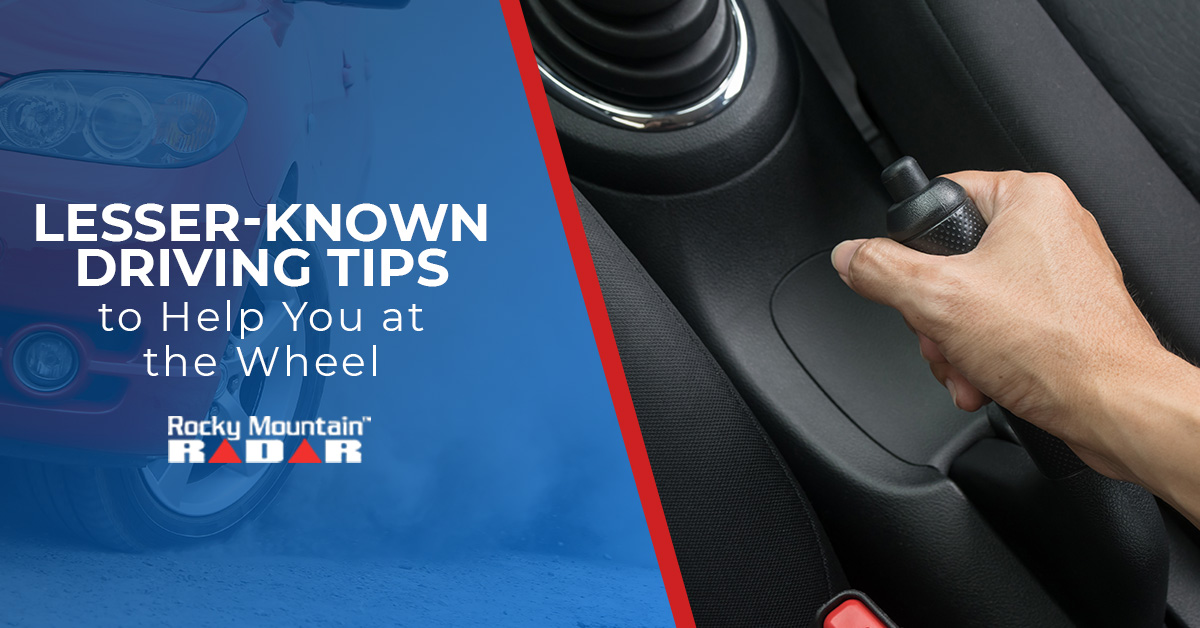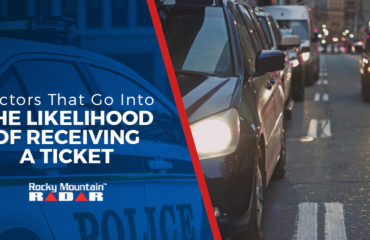Lesser-Known Driving Tips to Help You at the Wheel
Driving from Point A to Point B: it’s just a fact of life and a seemingly unavoidable reality here in the United States. Unless you’re a city dweller living downtown and taking advantage of the public transportation system (the stories you get from riding the New York City subway are worth their weight in gold, we’re sure), you’re probably using your car to get around. Sure, some people ride their bikes to work or school, and many people even walk to the corner store to get some snacks. However, when you need to travel any somewhat lengthy distance, you’re going to drive.
Drive Safe and Smart With Rocky Mountain Radar
Given that we spend so much of our lives at the wheel — a total of 37,935 hours according to a Harvard Health Watch study, it makes sense to get the most out of that time spent. Above all else, it’s important to reach your destination safely, but it also pays to save time and gas by driving efficiently.
For something that countless people do on a daily basis around the world, these driving tips aren’t very well-known (or put into practice on the road, at least). Rocky Mountain Radar, your source for passive radar jammers and the most reliable police radar jammers on the market, wishes to pass a little of our own driving insight onto you. Feel free to check out The Judge 2.0, our signature passive radar jammer. Otherwise, let’s get started.
Turn On Your Headlights Even When It’s Not Dark Out
Just because it’s the middle of the afternoon doesn’t mean that visibility is great or that other drivers on the road can see you. Perhaps you’re driving through a foggy section of road on the way to work or it starts snowing hard and you can’t see that far ahead of you.
While many vehicles are equipped with DRLs (Daytime Running Lights) that come on without turning your headlights on, sometimes that’s not enough for other drivers to notice that you’re there. If you’re driving on a particularly stormy, dark or just not clear day, do other drivers around you a favor and turn on your headlights.
Use Your Parking Brake On Occasion (Even When It’s Not Necessary)
If you drive a vehicle with an automatic transmission, you might be thinking to yourself, “When would I never need to use my parking brake? My shifter has an entire mode just for parking!” That’s true, but there are situations where having that extra parking power is a good idea (such as parking on a steep hill).
Even if you consistently park on a flat surface, it’s still good to active your e-brake here and there. Why? Though this is somewhat rare, unused e-brakes can stop working over time. Try to use your e-brake about once a week even when you don’t need it — imagine how terrifying it would be to need your parking brake, only to discover that it’s not functional. Yikes!
Wait For Approaching Drivers to Start Turning Before You Pull Out
Trust in other drivers is part of the driving experience. What you shouldn’t trust, however, is that all drivers are consciously aware that their turn signal is on. If you’re at a stop sign or traffic light and you’re about to proceed forward or pull out in front of a “turning” vehicle, make sure that they actually follow through with what their vehicle is communicating to you. T-bone accidents are no fun.
Cooperating When (Or If) You Get Pulled Over
Though our passive radar jammer is designed to prevent you from getting pulled over solely due to speeding, sometimes the unexpected and unwanted occurs. The officer pulling you over doesn’t know who you are or whether you’re a threat or not, so naturally, they’re going to be cautious and on edge.
Make their lives a little easier by cooperating when you’re pulled over. If it’s dark outside, turn on your dome lights, put your hands on the steering wheel, and even pull your keys out of the ignition and place them on the dashboard, indicating that you’re not going anywhere for a little while. When asked for your license and registration, slowly reach for it.
Take a few deep breaths, be polite, and answer their questions honestly. A courteous pull over experience may net you a warning instead of a traffic ticket.
Drive Defensively
Growing up, many (but not nearly enough) young drivers are taught that anticipating other drivers’ actions is the single most important — and often challenging — driving dynamic. Defensive driving means that you’re essentially assuming that everyone out on the road is trying to kill you. Well, it’s not quite that cynical, but the idea is that you can’t trust what someone else is going to do such as following through with a turn or fully stopping at a traffic light.
Putting blind trust in other drivers on the road is not only senseless, but it’s flat-out dangerous.
Replace Your Tires With High-Quality Tires
Your tires are the only thing connecting your vehicle with the road and providing an element of control beyond your actions. Driving around on balding tires is just dangerous; you’re going to have much more grip on the road with a set of good all-season tires (or studded winter tires for those living in cold and snowy places).
Avoiding Speed Tickets With Our Passive Radar Jammer
There are no other police radar jammers for sale other than The Judge 2.0. Learn more by contacting Rocky Mountain Radar.




